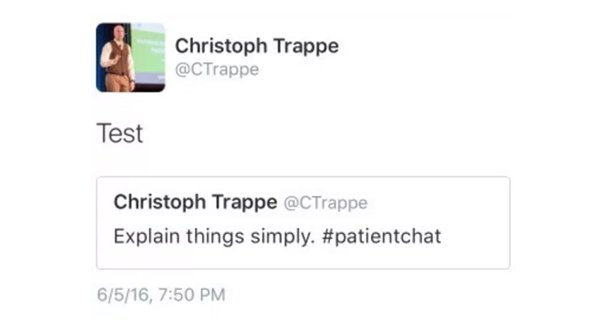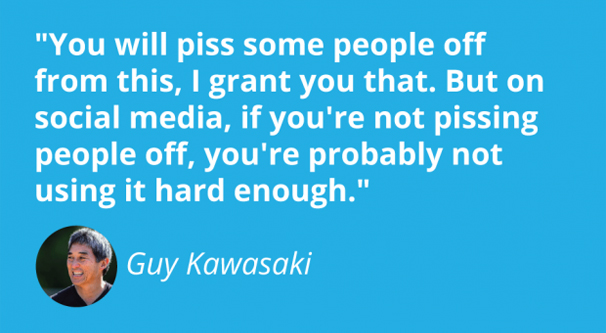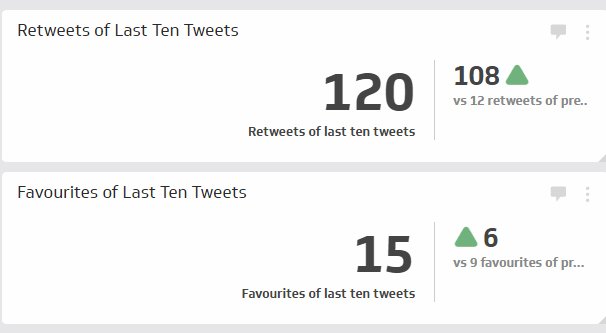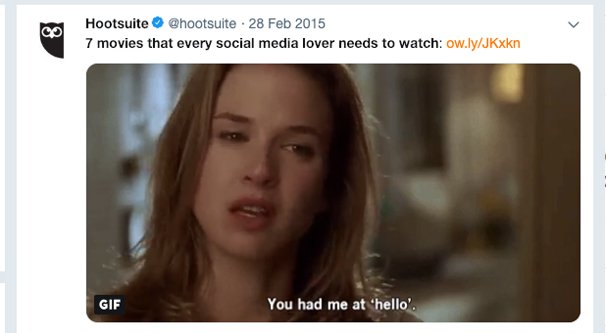Retweeting is one of the actions you can take with a tweet on Twitter. It’s right up there with replying to one, liking one, or adding one to a Moment. When you retweet a tweet, it shows up in your feed with full credit to the original poster. This is opposed to the old form of retweet, in which you had to manually type RT @OriginalPoster: “The Content of the Tweet.”
What about retweeting your own content? Some people do it, other people don’t. Some people love it, other people hate it. There’s a surprising amount of discourse surrounding this one possible action.
First of all, being able to retweet yourself wasn’t always possible. Twitter actually added the feature in the middle of 2016. Since the feature was added, untold numbers of people have retweeted themselves, for a variety of reasons. Is it a good thing? Is it a bad thing? That’s up to you. I’m going to discuss the benefits and drawbacks of using this feature on your own content. If you would like to read some other perspectives, here are some options.
- Is Re-Tweeting Your Own Tweets the Saddest Thing You Can Do Online?
- In Praise of Retweeting Yourself
Anyways, here’s my thoughts on the matter, distilled from my own experiences and extensive reading throughout the community.
The Benefits of Self-Retweets for Marketing
There are, obviously enough, a number of benefits to retweeting your own content. The biggest one is to add a bit more exposure to some piece of content you want to share. It could be a joke in a tweet. It could be an image, gif, or video you want to share. It could be a link to a blog post, product page, landing page, or opt-in offer you want to circulate as much as possible while it’s still relevant. It doesn’t necessarily matter WHAT you’re retweeting; the purpose is generally the same.
Twitter is messy. It’s crowded. A user following 100 people might see several hundred tweets a day. Someone who follows everyone they find even moderately amusing isn’t going to be able to actually see or engage with a fraction of the content posted each day. Not to mention all of the outside retweets, the replies, the like notifications, the moments, and the sponsored content. There’s just too much. You miss so much every time you look away.
This is, by the way, why so many brands talk about the importance of finding the right time of day to post. You want to catch the peak hours while as many of your followers are online and active as possible. An hour later, most of those people logging on won’t see your content; it’s too far down the feed. You want to hit them while they’re active.
There’s an alternative to retweeting yourself, though. You can simply post the same content again. Maybe it’s the same link with a different quote or sentence introducing it, or maybe it’s just the same exact tweet, copied and pasted. I’ve talked about the virtues of posting the same thing several times already.
You don’t even have to worry about the repercussions of posting the same content multiple times, at least not really. If you’re a very small brand with only a few hundred followers, maybe those followers will be more likely to get fed up and call you out on it. If you’re a larger brand, however, you can get away with a lot more. My favorite example is from 2015, back when HootSuite decided to post the same piece of content 44 times. They got called out on it by a few people, but at the same time, they got a spike in exposure every time they posted it.
That’s the thing about Twitter. For every person who is active enough to see that you posted the same thing six times this week, there are a hundred people who only log on enough to have caught one of them. I’d say a random selection of 600 followers is enough to outweigh the whining of one overly sensitive person. Of course those numbers are completely made up, but the point stands.
A related piece of advice comes from the non-profit sector, where they recommend retweeting yourself for added exposure without the need to come up with a new tweet every time.
There’s one major drawback to using this method rather than simply posting new content with the same link multiple times. Retweets can only be done once per account at a time. What do I mean?
You can post a piece of content, and you can retweet that piece of content. If you want to retweet it again, however, you have to undo the original retweet. At most, you can only have two copies of that piece of content – the same specific tweet, that is – on your feed at any given time. If I post on Monday, retweet on Wednesday, and decide to retweet again on Friday, the Wednesday time stamped retweet disappears.
This isn’t actually a drawback as far as I’m concerned. See, any engagement that comes form the retweet actually goes to the original tweet. People who retweet a retweet are actually just retweeting the original tweet. Retweets are like windows into the past, they aren’t really duplicates of the content. This is important for Twitter because it doesn’t split up engagement the way different shares of the same post on Facebook split it up.
A simple retweet is also a lot cleaner than some of the other options. A lot of brands use shorthand for their copies of content. They might post it once “for the morning folks” and again later “for the evening crowd”, but adding those phrases to every tweet gets repetitive and fails to acknowledge the people who have nothing better to do than lurk Twitter all day. It’s also cleaner than prefacing every copy with ICYMI, or In Case You Missed It. That alone can get annoying to the people who did not, in fact, miss it, and if you ICYMI every tweet you make every few days, it becomes a meaningless flag in front of everything you post.
There’s a good mechanical reason to retweet yourself as well, as opposed to posting a second copy of your content with a different tweet. Aggregating all of the engagement in one place is valuable, but it also has a chance to give you an additional boost to content you post into the “in case you missed it” section of your followers feeds.
Basically, the higher engagement you get from repeats of your retweets makes your content look more valuable to Twitter, which in turn makes it more likely to be part of the selection of stuff they showcase to people coming back after a few hours or days.
The Benefits of Self-Retweets for Comedy
You also have to recognize that there are some non-marketing benefits to retweeting your own content.
One of the articles I linked to up above mentions that it can often be like “a friend reminding you of a joke they told six months ago.” Only a few clever friends have the right sense of timing to pull it off. Most everyone else is just bringing up a joke that wasn’t quite funny then, isn’t quite funny now, and isn’t appropriately timed.
That said, there are often times where particularly amusing tweets can be retweeted just to get that additional exposure. Some Twitter users are perfectly capable of pulling it off, while others aren’t. There’s nothing new about that.
You can also use self-retweets for polite self-owns, if you know what I mean. Maybe two years ago you said “if X happens, I’ll eat my hat.” Two years later and sure enough, X happens. What do you do? You can almost guarantee that one of your followers remembers and will dig up that tweet. You could go and delete it, but why not just own it? Retweet yourself and stage making a hat out of beef jerky and eating it or something equally inane, goofy, and engaging. It can’t hurt, right?
You just don’t want to be the butt of the joke. Otherwise you end up in a situation like this. That, or you end up looking like the Onion’s constant reposts of the “no way to prevent this” article, pushing humor into tragedy because there’s seemingly nothing else that can be done.
It can go in the other direction as well. Predicting something accurately a year in the past means a careful retweet can stir up some engagement based on how accurate you were. You don’t even need to draw attention to it; just retweet it and wait for someone to notice the old timestamp.
The Drawbacks to Self-Retweets
Despite all that I’ve written above, there are a few drawbacks to retweeting yourself on Twitter.
The first and most obvious of the drawbacks is that people notice it, and sometimes they just don’t like it. There are a lot of people who don’t care about the context; as far as they’re concerned, any time you’re retweeting yourself, you’re doing it because you’re desperate for attention and you want every iota of engagement you can get.
Other people might look at your retweet and feel like it’s an artificial inflation of your social metrics. There are studies that show people are more likely to engage with a social post if there’s already engagement there; no one wants to be the first, but many people will follow up. Part of that is simply that people like to respond to each other, but part of it is a sort of social herd behavior.
The thought, then, is that you’re retweeting yourself to seed some engagement in order to encourage more. I don’t think this is really a valid complaint, of course. One single retweet isn’t enough to trigger that herd behavior, it’s just a single retweet. This reasoning applies a lot more to people who purchase hundreds or thousands of likes, replies, retweets, and followers. Obviously, fake engagement is a bad thing, but retweeting yourself isn’t fake.
You do have to consider timing, however. If you make a post and then retweet it half an hour later, the chances are pretty high that many of the people who see the retweet are people who saw the initial tweet. At the very least, you have to wait half the day before you retweet yourself. Most of the time, your retweets are going to be days, weeks, or even months later.
The other potential drawback is that you might not have the audience to support the additional exposure. Smaller accounts retweeting themselves aren’t likely to have gotten a lot of engagement the first time around, so the second run just seems desperate. Worse, if you retweet your one good piece of content, chances are most of the people who see it already engaged with it the first time around. You really need a larger audience to be able to support self-retweets.
Speaking of audiences, I’m going to turn the question over to you. Those of you reading this: do you retweet yourself on Twitter? If so, does it work for you? If not, why not? What do you think of other people who do? I’d like to hear your perspectives.








